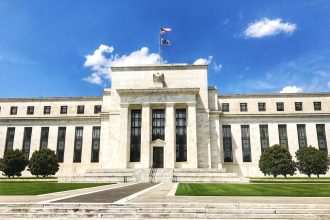Key takeaways
- Cash advance apps offer a short-term solution to cover unexpected expenses for those living paycheck to paycheck.
- These apps charge lower fees than traditional payday loans, making them a more viable option for managing unexpected expenses.
- Some cash advance apps, such as Earnin and Dave, also offer budgeting tools and resources to help users better manage their finances.
- It’s important to be cautious when using cash advance apps, as they can still come with risks and should not be relied on as a long-term solution for financial stability. Building an emergency savings fund is a more sustainable way to handle unexpected expenses.
When living paycheck to paycheck, an unexpected expense can significantly disrupt plans. Cash advance apps are a short-term solution to cover those unexpected expenses.
Bankrate’s latest emergency savings report found that only 44 percent of adults would be able to pay for a $1,000 surprise expense with their savings. Without an emergency fund to fall back on, issues such as a failed transmission or a burst pipe could sabotage budgeting plans and cause financial stress.
One common way to cover expenses until the next paycheck is to borrow money that you repay with a future paycheck. Payday loans and cash advance apps both allow you to borrow money ahead of the next payday. With a payday loan, lenders charge high annual percentage rates (APRs) to borrow money. These high fees can lead to more long-term financial trouble since they can build up even more debt.
Cash advance apps are a newer development that similarly provides fast cash ahead of your next paycheck, but tend to charge much lower fees than payday loan lenders or none at all. The app makers earn money off of voluntary “tip” payments or membership fees, rather than interest. These lower costs make cash advance apps a viable option for making it until the next payday without getting trapped in a cycle of growing debt.
1. Earnin – Best for hourly workers
Earnin is an app that allows you to borrow against your next paycheck quickly without any fees or interest payments attached.
When users sign up for the app, Earnin connects their bank accounts to verify their payment schedules. The app calculates users’ hours by tracking how long they’re at work using their phone’s GPS or by allowing them to submit a timesheet. It then determines the hourly pay rate based on how much money the user receives in direct deposit.
Earnin allows you to withdraw wages that haven’t been paid for by employers yet. When the next paycheck hits your bank account, Earnin automatically debits your account for the amount that was borrowed.
Users can withdraw anywhere from $50 to $750 each pay period, depending on their estimated earnings and record of repayment. Regardless of the pay period maximum, the amount you can withdraw is capped at $100 per day.
There is no fee attached to the service. Earnin makes money from voluntary tips from its users.
- Costs: voluntary tips
- Max advance: $750
2. Dave – Best for overdraft protection
If overdraft fees are cutting into your budget, Dave can help. Dave’s app looks for potential overdrafts, like an upcoming bill, and alerts users before their accounts are overdrawn. The app also provides a Yours to Spend summary, a personalized budget that factors in income and past expenses to estimate how much users can spend freely.
If you don’t have the funds available for an upcoming expense, Dave can lend a small advance. It determines the max advance amount based on how much you’re able to pay back on the next payday. Users are expected to repay the interest-free advance as soon as their next paycheck is deposited.
Additionally, Dave can guide users to find a side hustle in the gig economy. A side hustle is a job taken on in addition to a main job, and it may have more flexible hours and pay. It can help eliminate the need to take out a short-term loan at all by providing supplemental income in between paychecks.
Dave membership costs $1 a month, and users who want further support for the service can also send tips. Dave also has a spending account users can sign up for, which comes with a feature that allows paychecks to deposit into your account up to two days early.
- Costs: $1 a month plus voluntary tips
- Max advance: $500
3. Brigit – Best for automated advances
Brigit is another app that helps with budget management and offers cash advances to stretch funds between paychecks.
To get an advance, Brigit needs to connect to a user’s checking account that has an active history of at least 60 days. Additionally, the checking account must have a positive balance and a record of at least three direct payroll deposits. Assessments of your bank account and spending history factor into a Brigit score, which the app uses to determine whether you qualify for instant cash. Users may qualify for up to $250 in cash advances. Brigit then sets a due date for the loan’s repayment.
Users who qualify for instant cash through Brigit also have the option to turn on an automatic transfer feature that sends an advance to the user’s bank account when they’re at risk of an overdraft. Plus, like the Dave app, Brigit can help you find a side hustle to bring in extra income when you need it.
The basic membership to Brigit is free but doesn’t include access to cash advances. That service requires upgrading to Brigit Plus for $8.99 a month, which includes several other features to boost users’ financial health, including a credit builder, identity theft protection and repayment extensions that allow users to reschedule their due dates.
- Costs: $8.99 a month to access the cash advance feature
- Max advance: $250
4. Current – Best for spending
Current is a checking account available only through a mobile app. The app’s goal is to help consumers spend less money on fees and find ways to budget more effectively. The app offers cash advances in the form of free overdraft coverage.
With a Current account, direct deposits transfer to your account up to two days sooner and overdrafts are covered with no fee — up to $25 in overdrafts for new account holders, with the ability to increase that limit to $200 over time.
When you spend money with a Current debit card, you can earn points back on purchases with participating merchants. Points can then be redeemed for extra cash.
Current also instantly releases pre-authorized holds on purchases with variable amounts, such as gas stations, that typically place a hold on your account for up to 10 days. Current releases the hold, sending the funds back to your account.
At the time this article was updated, Current also offered a $50 bonus when new members sign up and receive a direct deposit of $200 or more within 45 days.
- Costs: None
- Max advance: $200 in overdraft protection
5. Chime – Best for those tired of bank fees
Chime is an app that is associated with Chime’s Checking Account. With the Chime app, users can receive directly deposited paychecks up to two days early. The app sends alerts for any new transaction to help users keep track of spending and detect any unauthorized expenses. In the event that a user loses their debit card or notices a suspicious transaction, they can immediately disable the debit card from the app.
Chime comes with the SpotMe service, which allows account holders to overdraw their accounts up to $200. The limit for new users, however, is $20. Chime deducts the overdraft amount from the user’s next paycheck, helping users cover expenses without having to worry about overdraft fees.
Chime accounts are free to use. Instead of imposing bank fees on its customers, Chime earns money from fees charged to merchants for each debit-card transaction.
- Costs: none
- Max advance: $200 in overdraft protection
6. DailyPay – Best for those who receive direct deposits
DailyPay is designed for employees who want more flexibility with their paychecks. It allows employees to transfer their earnings from hours worked early, even up to daily.
Unlike some other early payday apps, the money you transfer over with DailyPay doesn’t need to be paid back — it’s money you already earned. However, it will be subtracted from what would otherwise be a weekly or biweekly paycheck.
When you make a transfer using DailyPay, it can be deposited to a checking account, savings account or a debit card. The app allows up to $1,000 in transfers each day for a variable fee.
Your employer must be enrolled with DailyPay for you to use it. The app charges a variable fee for each early payday transfer made.
- Costs: Varies per transaction
- Max advance: Up to $1,000 per day
Pros and cons of using a cash advance app
Though cash advance apps can help to cover emergency expenses, there are also some risks to consider that come with using them.
Pros of cash advance apps:
- Consumers can conveniently access funds to cover emergency expenses ahead of the next paycheck.
- Cash advance apps come at a much lower price — or none at all — than payday loans.
- Some of the apps come with helpful budgeting tools, like Dave’s Yours to Spend feature.
- With a cash advance app, you can more easily avoid overdraft fees by funding your account before it is overdrawn. Several of the apps even automatically cover overdrafts.
Cons of cash advance apps:
- Cash advances can lead to a debt trap when users aren’t able to pay back the loan with their next paycheck.
- The apps may encourage bad spending habits, since the advance funds don’t necessarily need to be spent only in emergencies.
- Some of the apps still come with fees, even if those fees are lower than what payday loans cost.
- Signing up for a cash advance app means you are sharing personal data and potentially putting it at risk.
Bottom line
The days between paychecks can seem like a major obstacle, especially for low-income populations. Cash advance apps can help to provide some extra assistance to cover emergency costs, but it’s best to pair them with building an emergency savings fund. That way, you’ll have short-term coverage from the app if needed, while also practicing better saving habits.
—Former Bankrate writer René Bennett wrote a previous version of this article.
Read the full article here
















